In this article, we delve deep into the world of national accounts and explore the often overlooked yet incredibly essential aspect of the GDP's structure. With countries like the UK and US experiencing constant economic growth, there raises a question - "Is it all just a facade, fueled by overwhelming borrowing?"
On the flip side, Russia seems to have an impressive account surplus, but can we equate surplus to solid economic health? We explore these questions and more, aiming to unravel the complex intricacy of national accounts and GDP contributions. In doing so, we also shed light on immigration's impact, the potential pitfalls of treating consumption as an investment, and how high-tech innovations have a significant role to play in the future global economy.
Understanding National Accounts and the Impact on GDP
Countries all over the world have different economic strategies and development stages that influence their national accounts. Here, we delve into a comparative analysis of several countries, focusing on their account status and GDP growth.
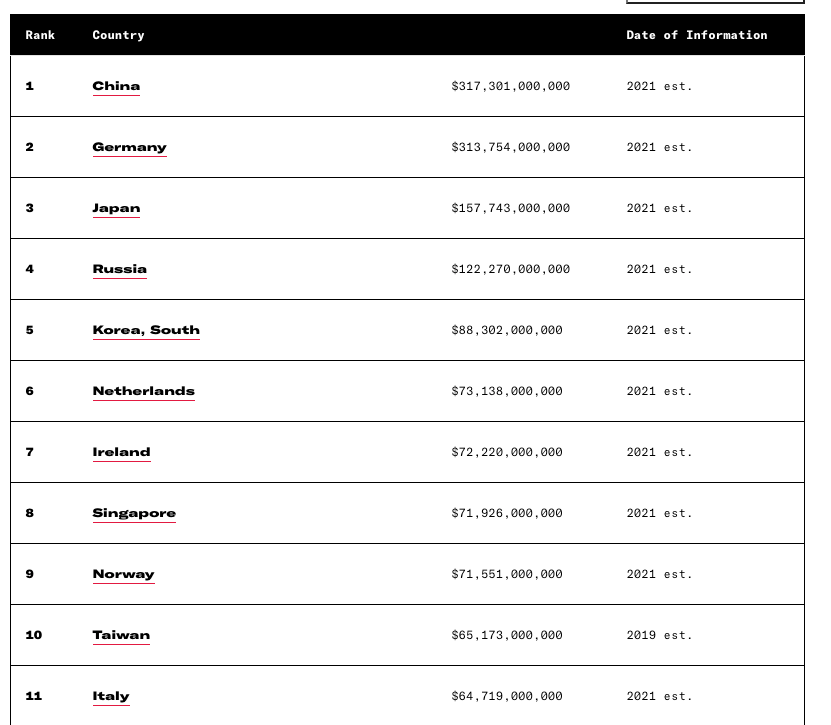
The State of National Accounts in US, UK, Canada, and France
The national account situation in these nations could be described as lackluster. There is a valid argument that the increase in GDP of these countries results significantly from borrowing. In essence, their GDP growth might not essentially portray economic viability or consistent development but a reflection of a growing debt issue. It aligns with their declining economic complexity index score.

Russian's Remarkable Account Surplus
Russia's account surplus stands out, being ranked second globally. Many could interpret a high surplus account as a signal of a strong economy. However, it shouldn't be mistaken for economic growth or stability. What Russia as being a middle income country should be doing more is investment into foreign equipment to drive future growth, a strategy China is currently deploying (Chinese surplus amount is much lower compared to their export).
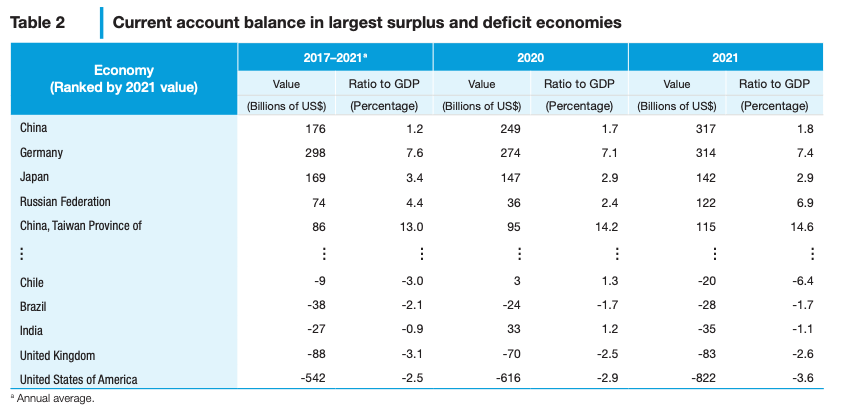
The Power of Account Surplus in Long-term Gain
Endeavoring for a state of account surplus generally points to a long-term gain for a country's economy. As opposed to account deficits that mostly pander to immediate consumptions and often downplay in long-term GDP growth, account surpluses indicate responsible money management and promise stability in the future. When other nations see this consistent surplus, they are more likely to invest, leading to increased national income in the long term.
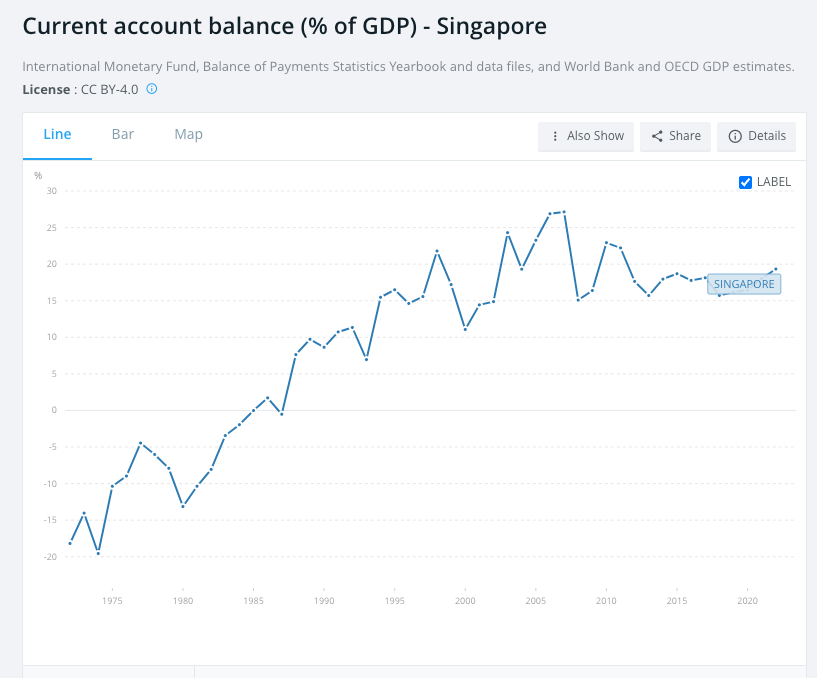
Israel's Deficit and Growth Model
Israel provides intriguing analysis. They've started Yozma, a governemnt backed venture capital in 1993. When you look at their account balance however, their deficit runs until 2003.
It shows taking a calculated risk to hop on the deficit to buy the necessary equipment for future growth, it appears that Israel followed the ideal growth model. The risk has paid off with a boost in GDP within a decade. The account deficit alone is not a conclusion of bad economic policy.
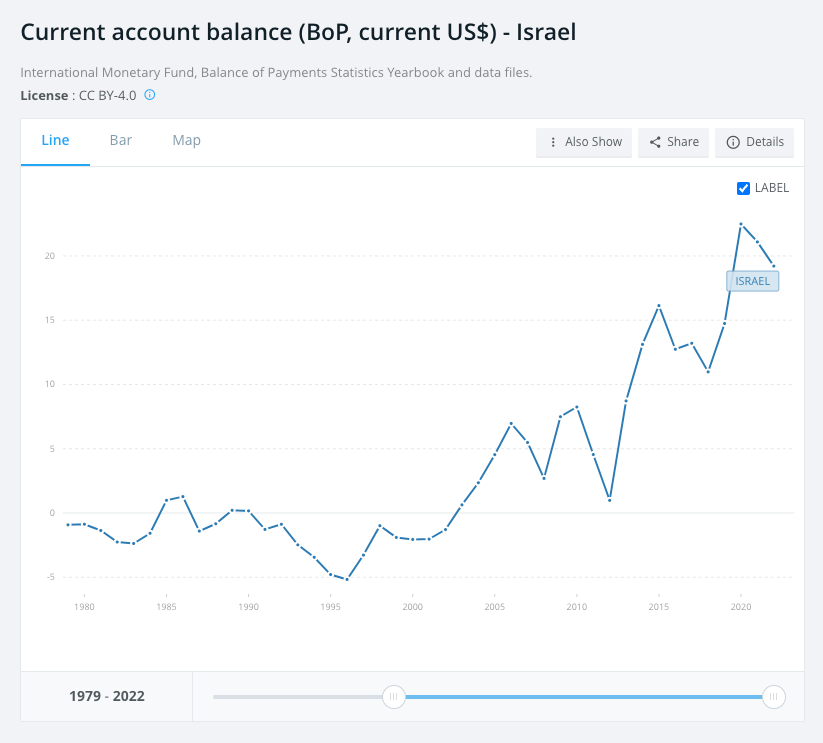
Understanding Anglosaxon Excess Borrowings
The longevity of borrowings for countries such as the US and the UK raises questions. In the UK, a deficit has been running since 1990, risking rising interest rates domestically and slow growth due to neglect of future investment. These are consequences of consistent deficits and might explain the forecasted slow growth for the coming decades. This will contribute also in their inability to invest in the growth sector.
In case of US, their larger economy size and the US dollar being the international standard let them borrow much bigger than any other counterpart. This begs the question of US's ability to invest in the future growth sector.
It's also safe to say these countries are not borrowing to invest in the growth sector. Or else, they should have seen the massive growth at some points in the past 30 years like that of Israel. Instead, they are funding their ever growing habits of consumption namely healthcare, social welfare, and large housing.
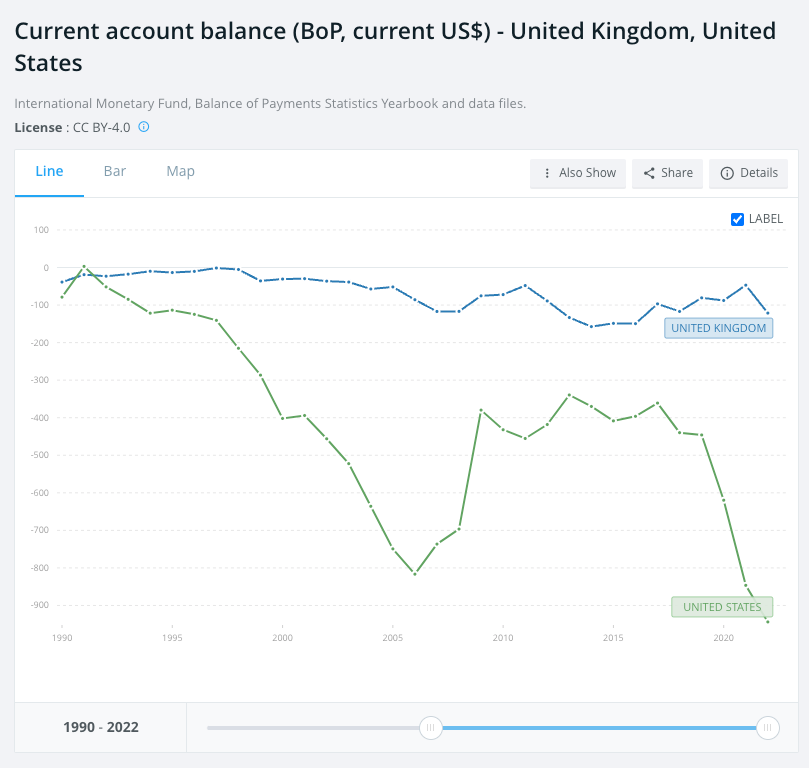
Ideal Living Countries
The best countries for a stable and thriving economic life are those that combine existing prosperity with an ongoing increase in production. Notable mentions here include Germany, Taiwan, Singapore, Japan, and Switzerland, all of which rank high in economic complexity index.
Depending solely on oil wealth, like Russia, Norway, Saudi Arabia, might pose risk in the future due to the uncertain dynamics of oil demand. Saudi Arabia might transform successfully with their Vision 2030, but it comes with a large uncertainty nevertheless.
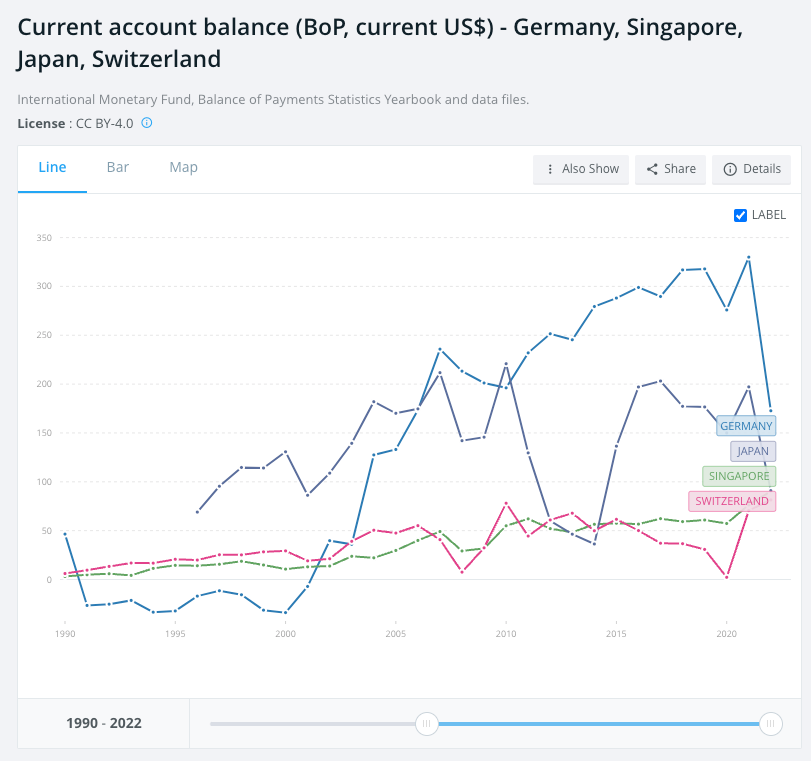
The Challenges of Distinguishing Consumption from Investment
A key challenge lies in correctly categorizing transactions as either consumption or investment. Take education and healthcare, for instance; they could be deemed investments in human capital (ie: emotional safety from absolute healthcare contributes to better productive workers), although often they are categorized as consumption. Expenditures to boost living standards can also blur the line between investment and consumption.
The Role of Immigration in National Accounts
Immigration does not directly influence a country's national account status. From my experience from traveling abroad, immigrants are mostly attracted to countries based on available amenities and living standards. However, attracting high-tech individuals could help boost a country's technological edge and economic productivity.
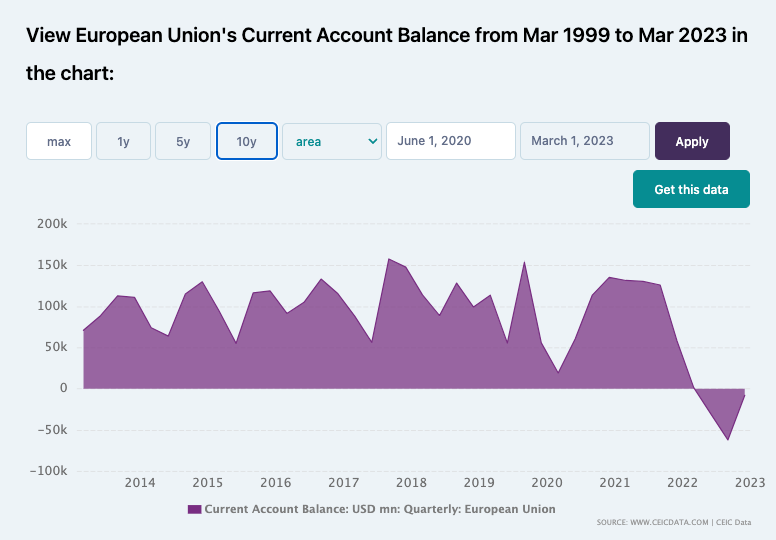
Unpacking the GDP Illusion of US, UK, France, and Canada
From a standpoint of account deficit analysis, the GDP growth in these nations after 1990 might have been artificially propped. The inflating figures due to borrowing-led consumption presented an illusion of GDP growth. This scenario was plausible because of limited technological capabilities to maintain their status as prosperous nations, thereby resorting to borrowings.
Conclusion
National accounts provide valuable insights into a nation's economic situation, playing a crucial role in GDP growth or contraction. Policymakers need to strike a balance between consumption and investment, manage national debts, and strategically invest in future growth technologies to maintain sustainable growth.

